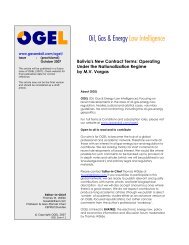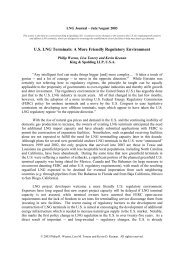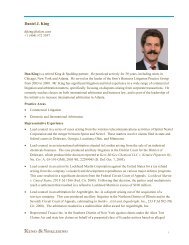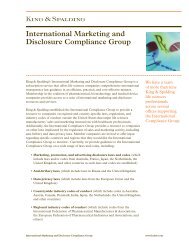Due Diligence Review: M&A Behind the Scenes - King & Spalding
Due Diligence Review: M&A Behind the Scenes - King & Spalding
Due Diligence Review: M&A Behind the Scenes - King & Spalding
You also want an ePaper? Increase the reach of your titles
YUMPU automatically turns print PDFs into web optimized ePapers that Google loves.
INTEGRATIONplanning<br />
Fail to Prepare and Prepare to Fail…<br />
BY DAVID AXON<br />
The merger of two or more corporations is <strong>the</strong> culmination<br />
of a vast amount of detailed preparation and complex<br />
negotiations prior to deal closure. However, early planning,<br />
clear communication and <strong>the</strong> effective use of due diligence<br />
will ensure that <strong>the</strong> correct mechanisms are in place to ease <strong>the</strong><br />
burden of post-deal integration. In <strong>the</strong> flurry of activity prior to<br />
<strong>the</strong> ink drying on <strong>the</strong> legal documents, it is hard to find <strong>the</strong> time<br />
to be forward thinking or consider how both <strong>the</strong> run up to <strong>the</strong><br />
merger and <strong>the</strong> post merger integration could have been handled<br />
better to secure <strong>the</strong> future stability of <strong>the</strong> company.<br />
It is very easy to fall into <strong>the</strong> trap of being short-sighted when<br />
planning or implementing a merger or acquisition. Key players<br />
within a company often feel <strong>the</strong>y have ticked all <strong>the</strong>ir boxes;<br />
<strong>the</strong>y have acquired a company that is a perfect strategic fit with<br />
significant overlaps in suppliers and services for example.<br />
However, planning for <strong>the</strong> unexpected and preparing detailed<br />
forecasting models are essential to <strong>the</strong> longevity of any organisation,<br />
and can easily be overlooked in favour of short-term goals.<br />
The post merger phase presents many common problems,<br />
which may weigh very heavily on <strong>the</strong> board, but can be mitigated<br />
with careful planning. For example, staff morale may be low<br />
and key personnel may have left <strong>the</strong> organisation. Fur<strong>the</strong>rmore,<br />
management may not have visibility of <strong>the</strong> detailed operating<br />
performance of <strong>the</strong> target organisation. The integration of new<br />
systems is also likely to prove troublesome or lack co-ordination.<br />
A spin-off effect of <strong>the</strong>se problems may be a sense of unease or<br />
uncertainty, resulting in a marked drop in productivity.<br />
From our experience, it is never too early to start planning for a<br />
merger. Detailed integration planning should be carried out as far<br />
as possible prior to completion, to avoid overlooking crucial<br />
details or missing out on post-merger opportunities. It is imperative<br />
that management teams determine <strong>the</strong> style of integration<br />
<strong>the</strong>y want to adopt from day one. i.e. should <strong>the</strong>y use a top down<br />
approach, a bottom up approach or a mélange of <strong>the</strong> two? Each<br />
style has its benefits, but also its issues (speed of delivery vs. sustainability<br />
for example). Lack of clarity around <strong>the</strong> style of integration<br />
may lead to disastrous post-merger consequences.<br />
The advantage of engaging a specialist team, is that <strong>the</strong>y can<br />
deliver a broad range of tailored services designed to plan and<br />
implement deals in a more timely, efficient and coordinated manner.<br />
One of <strong>the</strong> first and most important strategic services to carry<br />
out prior to a merger is operational due diligence, which will<br />
identify and address potential problems that may be encountered<br />
following <strong>the</strong> integration of two companies. It is also necessary<br />
to evaluate synergies and prepare a detailed synergy plan prior to<br />
completion.<br />
Synergies need to be considered in a holistic manner.<br />
Management teams need to identify not only cost reduction and<br />
productivity improvement opportunities, but also revenue<br />
increasing opportunities, which are perceived by staff as optimistic<br />
growth signals, with positive implications for morale.<br />
Synergy opportunities overlooked in <strong>the</strong> early stages, will prove<br />
significantly more difficult to realise later down <strong>the</strong> post merger<br />
line.<br />
The focus on <strong>the</strong> financial benefits of a merger and financial<br />
due diligence is understandable, but before <strong>the</strong> consolidation of<br />
offices it is wise to build up an environment of trust within <strong>the</strong><br />
target organisation. This trust must emanate from <strong>the</strong> management,<br />
and be backed up by a specialist integration team, which<br />
should be set in place from day one, to aid <strong>the</strong> coordination of<br />
new and existing personnel. However, perhaps <strong>the</strong> most vital<br />
component towards achieving a successful integration of companies<br />
and services is communication; continuous, targeted and<br />
precise communication to all stakeholders, at each stage of <strong>the</strong><br />
process.<br />
Increasingly, companies face delays to transactions for a number<br />
of reasons. A key challenge is to use that time to best effect<br />
whilst not having <strong>the</strong> certainty <strong>the</strong> deal will go ahead. The most<br />
successful businesses are those who invest this time well and<br />
plan <strong>the</strong>ir integration strategy during <strong>the</strong>se quieter periods.<br />
Hindsight is a wonderful thing. Post merger, companies which<br />
find <strong>the</strong>mselves in a chaotic situation should be reassured that it<br />
is not too late to evaluate what has gone wrong or to remedy <strong>the</strong><br />
situation. Independent, objective advice, even if it is just a case<br />
of bouncing ideas to a third party, is a good starting point. The<br />
most important point to remember if you are experiencing debilitating<br />
problems is that you will need to work in partnership with<br />
your new organisation, and <strong>the</strong> inclusion of several of <strong>the</strong>ir key<br />
personnel on your integration team will prove invaluable.<br />
Secondly, it may be necessary to refocus integration objectives<br />
with a view to 'taking' control of <strong>the</strong> combined corporation and<br />
preserving existing values.<br />
Looking forward it is essential for any newly-merged company<br />
to establish a process which monitors <strong>the</strong> operational performance<br />
of <strong>the</strong> acquired business and track <strong>the</strong> progress of <strong>the</strong> integration<br />
programme.<br />
Remember that more planning and less action, combined with<br />
clear channels of communication, is <strong>the</strong> smart way to prepare for<br />
a merger. In short, aim to consider what should be integrated,<br />
how and a timeline of when. If you do decide to procure <strong>the</strong><br />
advice of an external post-integration specialist, remember that<br />
<strong>the</strong>ir aim should essentially be your aim; to bolster <strong>the</strong> bottom<br />
line – maximising <strong>the</strong> return on <strong>the</strong> deal.<br />
David Axon is a partner and Head of Grant Thornton’s operations and post<br />
deal services team.<br />
22 FW <strong>Due</strong> <strong>Diligence</strong> <strong>Review</strong>: M&A <strong>Behind</strong> <strong>the</strong> <strong>Scenes</strong> 2004 | www.financierworldwide.com

















